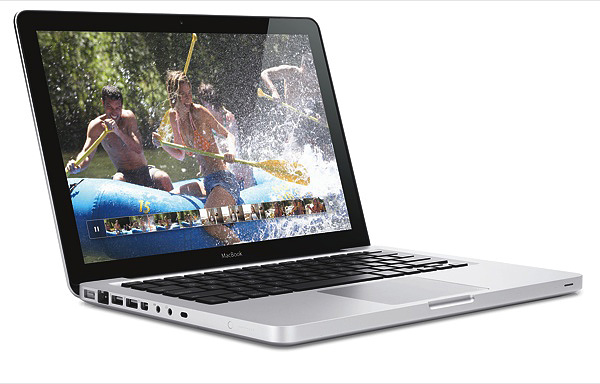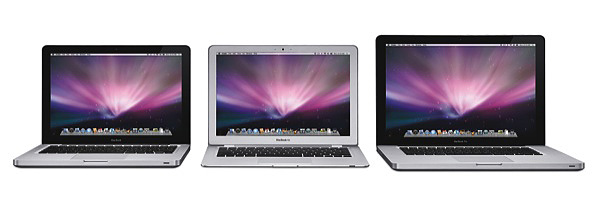
On Tuesday Apple released redesigned MacBook Pros and MacBooks. Even a cursory review of the spec sheets makes it obvious that this was primarily a switch to a new appearance, but there are a few interesting bits under the hood. But how do they apply to photography?
Graphics
Probably the biggest upgrade here is in the graphics capabilities. OS X has used graphics cards for drawing portions of its GUI for many versions now, with each revision increasing the load on the graphics core. With this release they introduced Nvidia’s new graphics chips across the entire laptop line, barring the plastic MacBooks, which are still being sold with a discount.
What does it mean?
These graphics cores will allow the expansion of the real-time graphical filters that are used within iPhoto and Aperture as well as by several third-party graphics programs. We’ll likely see more filters with better performance. Snow Leopard, the optimized version of OS X coming out next year, aims to heavily make use of the additional graphics processing, not only for imaging but also for general processing through its OpenCL language (graphics chips are many times faster than the CPUs inside these computers, and languages like OpenCL allow them to be used for non-graphical tasks). Even Adobe’s Photoshop is starting to use the graphics card for acceleration starting with CS4. In short, we’ll see less waiting for filters to be applied as well as more complex operation getting done much faster than previously. Third parties are already supporting the existing technologies and I can only imagine the use increasing with more capability spread across a larger base of capable systems. Moving general-purpose processing onto these high-speed graphics chips is seen across all platforms.
Hard Drives
128GB Solid State Drives (SSD) are now optional on all Apple notebooks.
What does it mean?
SSDs use memory chips that are read from/written to directly instead of traditional magnetic platter drives with microscopic moving parts. For a photographer this means that the images are safer due to the lack of moving parts that can be damaged from strong impacts or vibrations. It also means slightly longer battery life as well as significantly faster reads and writes.
Screens
The new notebooks have LED-backlit, glass-covered screens.
What does it mean?
LEDs are a much brighter way to backlight notebook screens than the old fluorescent lights, allowing a wider range of conditions in which the screen can be read, as well as a broader range of colors. I can say from personal experience that a previous-generation’s MacBook Pro is bright enough to use in direct sunlight. Color fidelity obviously suffers, but the screen is readable. For the first time all the machines come with LED screens, and this is a huge improvement over the previous units. The downside to LED screens is that some color calibration hardware doesn’t work very well with the newer lights, making accurate calibration impossible if you have such a unit. The new glass covers, though they allow for a sharper image with better saturation and contrast, greatly increase glare. Time will tell if third-party glare reduction screens will become available.
New Construction
Apple introduced a new machining process that allows tighter tolerances in more rigid enclosures for these machines.
What does it mean?
More peace of mind when you throw the notebook in your photo bag with 30 ponds of gear in it. Less chance of screen cracking and other damage in a slightly thinner package. I have been lucky, but a good friend lost a 15.4 inch screen to too much flex while in his bag. Apple replaced it under warranty.
No more FireWire port on MacBooks
With the removal of the FireWire port MacBook users lose the ability to use faster external devices while at the same time lose Target Disk Mode.
What does it mean?
The loss of FireWire drive choices might not affect people much, USB devices are fast enough. A bigger inconvenience is the loss of Target Disk Mode, which allows the user to boot a machine into a special mode that turns it into an external FireWire drive. It boots quickly and allows one to plug the machine directly into a desktop system. Great for people ready to move data from the notebook to a desktop (or vice versa) much faster than through other methods.

Overall it’s pretty obvious that this redesign had two goals; getting a new manufacturing process in place as well as building the foundation for a computing future that fully taps into the power of graphics processors. Photographers will benefit greatly from this, as the processing of images has been a popular application of the existing technologies and that will only grow as more capabilities are made available to the software developers. Compared to the previous generation of MacBooks and MacBook Pros this revision seems underwhelming, but this is just the first move with Snow Leopard being the second.


Leave a Reply